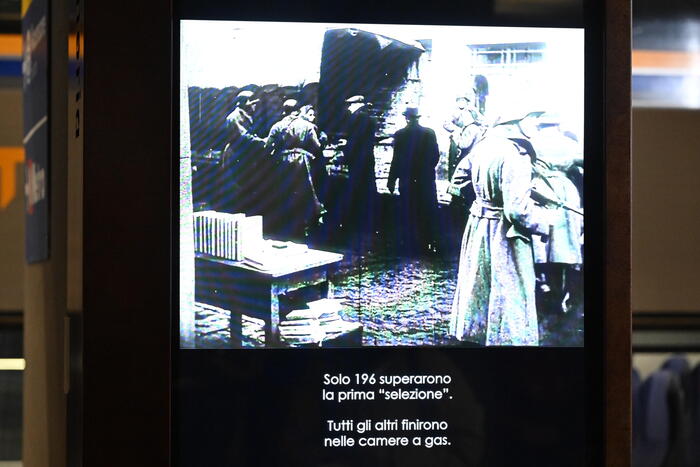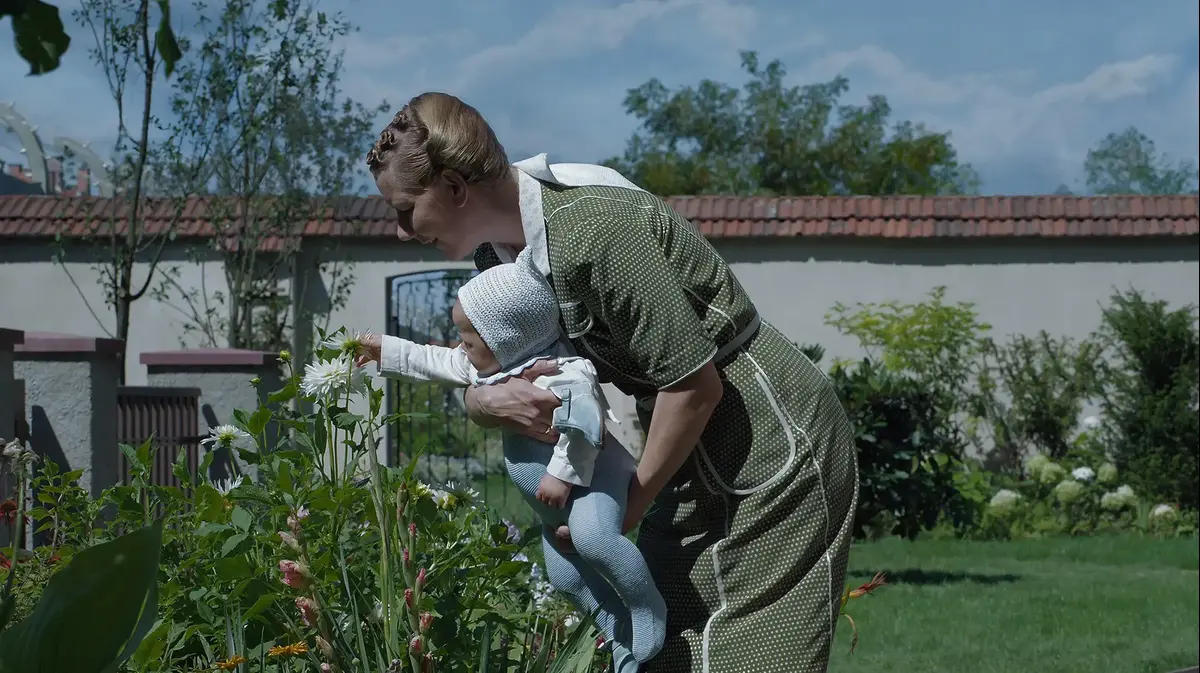Icon: enlarge
Ruins of the Warsaw Ghetto: The untruth cleverly woven into true facts
Photo: Roger Viollet / Getty Images
“The first gassing took place on October 17, 1943, when at least 150 Poles and 20 Belgian Jews who had previously been arrested in a raid on the street were murdered. Estimates [...] put the number of victims murdered in the concentration camp at well over 212,000, mostly Poles and a few thousand non-Poles. "
Apparently factual, the English Wikipedia described terrible events in an extermination camp in Warsaw, which is said to have been built on the ruins of the Warsaw Ghetto after the uprising was put down.
According to the online encyclopedia, the gas chambers were located in a former train tunnel on Gesiastraße.
For years, this and similar information was found in various places in the online encyclopedia, in numerous languages.
In a list of extermination camps, the Warsaw concentration camp is listed alongside Auschwitz and Treblinka.
Already in the first version of the article from August 25, 2004, there is a reference to the gas chambers in which Poles were murdered.
But that's a lie, a fake.
Even if it was in Wikipedia for more than 15 years: There was no extermination camp in Warsaw, not 200,000 Poles were murdered in gas chambers there.
There was actually a camp on the ruins of the Warsaw Ghetto for several months, but this never served as an extermination camp.
And there is no evidence whatsoever that gas was used against the inmates.
It is thanks to the Israeli newspaper "Haaretz" and the journalist Omer Benjakob to have uncovered this hoax in Wikipedia 2019.
The entry ("Warsaw concentration camp") has been corrected accordingly.
The Warsaw extermination camp is probably the fake that has been on Wikipedia the longest.
An old lie returns
In the case of the Warsaw "extermination camp", it was not someone who placed false facts in an existing article for fun.
Rather, Wikipedia's reach and reputation were used to re-introduce an existing lie into the public discourse.
The lie about the extermination camp in Warsaw is much older than the Wikipedia article from August 2004 - even older than Wikipedia and the Internet.
The claim that hundreds of thousands (non-Jewish) Poles were gassed in the camp in Warsaw has been spread by Polish nationalists since the 1970s.
The starting point of this hoax is the work of the Polish judge Maria Trzcinska, who was a member of the Polish commission to investigate Nazi crimes in Poland.
She was the first to claim that there were gas chambers in the Warsaw camp, and that the number of 200,000 alleged victims also came from her.
Her claims have found no echo among historians, and the Polish Institute for National Remembrance has also found in two publications from 2007 and 2010 that there is no evidence whatsoever for Trzcinska's claims.
But the Wikipedia project opened up new possibilities.
Since it was not possible to position these claims in the scientific discourse through publications or lectures, Wikipedia became the optimal detour to get this attention.
The nationalists benefited from the fact that they did not have to insert a new article, they could cleverly weave their lies into an article about a real existing concentration camp.
Because there is no doubt that the Warsaw concentration camp existed, but this was not an extermination camp.
Of course there is also no doubt that the Polish population suffered extremely under the German occupation of Poland.
All it took now was a skillful weaving of untruth into these facts.
A dark shadow on Wikipedia's history
It should be terrifying for any Wikipedian how easy this forgery was and how long it could last.
The Wikipedians should have noticed that the number of allegedly 200,000 Poles gassed was absurd: First, because it was by no means chosen by chance - around 200,000 Poles were killed in the Warsaw Uprising of the Polish Home Army between the beginning of August and the beginning of October 1944.
Together with the Poles allegedly gassed in the Warsaw extermination camp, the number of non-Jewish Polish victims would have risen to around 400,000 - and that corresponds almost exactly to the number of Jews murdered in the Warsaw ghetto.
But it would have been a lot easier to expose this whole story as a hoax.
If 200,000 people had actually been gassed in a "Warsaw extermination camp," then this camp would have been comparable to the extensively documented and researched extermination camps Sobibor and Majdanek.
It remains a dark shadow on the history of Wikipedia that it failed in this central case over such a long period of time.
The Wikipedia editing processes did not work here.
The articles about National Socialism are called up relatively often, there are numerous Wikipedians who are involved in the topic.
And there is an enormous amount of historical research on National Socialism and its crimes.
If a forgery in such a well-developed topic can last for more than 15 years - how great is the risk of similar forgeries on topics that attract less community attention?
more on the subject
Donate knowledge: Wikipedia could use youA Netzwelt newsletter from Martin U. Müller
About "fart artists" and the variety of colors: What can be learned from Wikipedia - an experiment interview by Silke Fokken
Interview with Wikipedia founder Jimmy Wales: "Fake news cannot impress the Wikipedia community" By Torsten Kleinz
I'm not a fan of giving work assignments to a volunteer community.
To say the Wikipedia project has to take care of it would be a mistake.
There is no one, no individual and no group that Wikipedia is.
Not even the history editor of the encyclopedia has a duty here, because the people who are involved there in their free time determine for themselves what they are interested in.
Of course, it is necessary and advisable to publicly point out such occurrences.
But it is too easy to want to oblige Wikipedia as an institution to do "something" about it.
We are all Wikipedia.
Much would be gained if the knowledge institutions, whose mandate is to research, curate and evaluate, became more involved in the project.
After all, who, if not the universities, museums, research institutes - and also the corresponding departments in companies - would be better positioned to critically monitor the Wikipedia project, track down errors and report them to the Wikipedians?
The scandal that a fictional extermination camp was on Wikipedia for more than 15 years is not only a problem for Wikipedia.
First and foremost, it is a problem of established historical research, which the Wikipedia project has obviously not taken seriously for a long time as a central resource for imparting knowledge.
The forgery did not reach the German Wikipedia
It is only a small consolation that this fictional extermination camp was not able to establish itself in the German Wikipedia.
When a user by the name Simplicius started the article in February 2005, he wrote - completely correctly and in accordance with the scientific literature: »There were no gas chambers here.
Most of the people died from poor living and working conditions and from abuse. "
Wikipedia makes mistakes, and the case of the Warsaw camp is particularly blatant.
The encyclopedia is radically open, anyone can edit it and everyone decides for himself how to participate.
Such openness can always be exploited by interested parties, as in this case.
Wikipedia makes mistakes - and the case of the invented extermination camp is particularly blatant.
The encyclopedia is radically open, anyone can edit it and everyone decides for himself how to participate.
Such openness can always be exploited, as in this case.
However, Wikipedia has created a system that is unique on the Internet for dealing with errors: the radical transparency makes every processing step traceable.
Any reader who finds errors can change them immediately without asking for permission.
Every Wikipedia entry has a discussion page as a feedback channel for readers who have noticed something.
This is all part of the unique culture of dealing with errors within the Wikipedia community: no other medium with such a reach is as transparent as it is open to immediate corrections as Wikipedia.
This is not only an enormous advantage in the fast-paced Internet, but also reflects the requirements of a world that is changing ever more rapidly.









